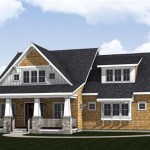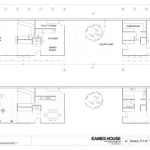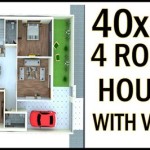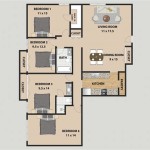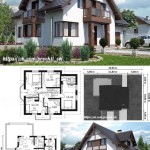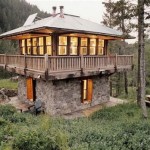Carriage House Plans With 3 Car Garage: A Comprehensive Overview
The convergence of architectural aesthetics and practical utility is embodied in carriage house plans that incorporate a 3-car garage. These designs offer a harmonious blend of historical charm and contemporary needs, providing ample space for vehicles, storage, and potentially, flexible living areas. This article delves into the various aspects of carriage house plans with 3-car garages, exploring design considerations, structural options, functional benefits, and the factors influencing their cost.
Carriage houses, traditionally used to store horse-drawn carriages and provide living quarters for coachmen, have evolved into versatile structures. Modern interpretations often feature a garage at ground level, mimicking the original carriage storage, with living space above. The addition of a 3-car garage enhances the modern home’s functionality, catering to families with multiple vehicles, hobbies requiring significant space, or a need for substantial storage.
Planning for a carriage house with a 3-car garage requires careful consideration of site characteristics, local building codes, and intended use. The size and layout of the garage must be proportionate to the overall design and the surrounding property. Additionally, the architectural style should complement the main residence to create a cohesive aesthetic appeal. These detailed considerations ensure a carriage house that is both functional and visually pleasing.
Key Design Considerations for Carriage House Plans With 3 Car Garage
The design process fundamentally shapes the functionality and aesthetic appeal of a carriage house. Several elements require deliberate planning to achieve optimal results. These involve both the exterior and interior aspects of the structure.
First, architectural style is a crucial consideration. Carriage houses can be designed to reflect various architectural styles, from traditional Victorian and Craftsman to modern and contemporary. The chosen style should complement the main house and the surrounding neighborhood. Elements such as roof pitch, window design, siding materials, and decorative details contribute to the overall aesthetic and create visual harmony.
Second, the layout of the garage and living space is paramount. The garage should be designed to accommodate three vehicles comfortably, with ample space for maneuvering and parking. Consider extra space for storage, a workshop, or a home gym setup. The placement of entry doors into the living space above is essential for convenience and security. The living space above the garage requires careful planning to maximize usable area and create a comfortable environment. The layout should address privacy considerations, especially if the living space is intended as a guest suite or rental unit.
Third, accessibility and functionality need to be prioritized. The design should integrate features that enhance accessibility, such as ramps or elevators, if necessary. The placement of stairs leading to the living space above should be carefully considered for ease of access and safety. The layout should also account for practical considerations such as adequate lighting, ventilation, and climate control in both the garage and living areas.
Structural Options and Material Choices for Durability and Aesthetics
The structural integrity of a carriage house is paramount, ensuring its longevity and safety. Selecting appropriate materials and construction methods is crucial for withstanding environmental factors and meeting building code requirements.
One essential aspect is the foundation. A solid foundation is the base of any structure and must be designed to support the weight of the building and withstand soil conditions. Common foundation options include concrete slabs, crawl spaces, and basements. The choice of foundation depends on the location, soil type, and intended use of the space. For example, a basement foundation can provide additional storage or living space, while a concrete slab is generally more economical for garage areas.
Another critical consideration is the framing. The framing of the carriage house provides the structural skeleton that supports the roof and walls. Common framing materials include wood, steel, and concrete. Wood framing is a traditional and cost-effective option, while steel framing offers superior strength and resistance to fire and pests. Concrete framing is often used for commercial applications and can provide excellent durability and insulation.
Exterior cladding materials play a significant role in the aesthetic appeal and weather resistance of the carriage house. Options include wood siding, brick veneer, stone, stucco, and vinyl siding. Wood siding offers a classic look but requires regular maintenance. Brick and stone are durable and add a touch of elegance. Stucco is a versatile option that can be textured and colored to match any architectural style. Vinyl siding is a low-maintenance and cost-effective choice.
The roof design and materials contribute to the overall aesthetic and protection from the elements. Common roof types include gable, hip, and gambrel roofs. Roofing materials include asphalt shingles, metal roofing, tile, and wood shingles. Asphalt shingles are the most affordable option, while metal roofing offers superior durability and longevity. Tile roofs are common in warmer climates and add a touch of sophistication. Wood shingles provide a rustic look but require regular maintenance.
Finally, insulation and energy efficiency are essential for maintaining a comfortable and energy-efficient environment. Proper insulation in the walls, roof, and floors can significantly reduce heating and cooling costs. Options include fiberglass insulation, spray foam insulation, and rigid foam insulation. Energy-efficient windows and doors can also help to minimize heat loss and gain.
Functional Benefits and Considerations for a 3-Car Garage Carriage House
Beyond its aesthetic appeal, a carriage house with a 3-car garage offers numerous functional benefits that address practical needs and enhance lifestyle. Evaluating these benefits is vital to determine if this type of structure aligns with specific requirements.
First, the primary benefit is enhanced parking and storage capacity. A 3-car garage provides ample space for parking multiple vehicles, including cars, trucks, boats, or recreational vehicles. The extra space can also be used for storing tools, equipment, seasonal items, and other belongings. This can help to declutter the main house and provide a dedicated space for storage.
Second, potential for flexible living space is a significant advantage. The living space above the garage can be utilized in various ways, depending on individual needs. It can serve as a guest suite for visitors, a home office for remote work, a studio for creative pursuits, or a rental unit for generating income. The flexibility of the living space allows homeowners to adapt it to changing circumstances and maximize its value.
Third, the separation of space is a valuable asset. A carriage house provides a physical separation between the main house and the garage/living space. This can be beneficial for noise reduction, privacy, and creating a distinct zone for work or leisure activities. For example, if the living space is used as a home office, the separation can help to minimize distractions and create a focused work environment. Similarly, if the living space is used as a rental unit, the separation can ensure privacy for both the homeowner and the tenant.
Fourth, increased property value may be a result of adding a carriage house. Constructing a well-designed carriage house with a 3-car garage can increase the overall property value. The additional parking and storage space, coupled with the potential for flexible living space, make the property more attractive to potential buyers. The architectural appeal of a carriage house can also enhance the curb appeal of the property and increase its marketability.
Fifth, when considering accessibility and usability, it is crucial to design the carriage house to meet specific needs. This may involve incorporating features such as ramps, elevators, wide doorways, and accessible bathrooms. The garage should be designed to accommodate the size and type of vehicles being stored. The living space should be designed to be comfortable and functional, with adequate lighting, ventilation, and climate control.
Finally, local building codes and regulations must be adhered to. Before embarking on a carriage house project, consult with local authorities to understand the applicable building codes and zoning regulations. These regulations may dictate the size, height, setback requirements, and permitted uses of the carriage house. Compliance with these regulations is essential for obtaining the necessary permits and avoiding potential legal issues.
The cost of constructing a carriage house with a 3-car garage can vary significantly, depending on several factors. These include the size and complexity of the design, the materials used, the location of the property, and the labor costs. It is advisable to obtain multiple quotes from reputable contractors and architects to get a clear understanding of the potential costs. Budgeting for unforeseen expenses is also recommended, as construction projects can often encounter unexpected challenges.
In conclusion, a carriage house plan with a 3-car garage represents a significant investment that blends aesthetic appeal, functional utility, and potential for increased property value. Careful planning, thoughtful design, and adherence to building codes are crucial for ensuring a successful project that meets specific needs and enhances the overall quality of life.

Carriage House Plans 3 Car Plan 053g 0002 At Thegarageplan Com

Carriage House Plans Plan With 3 Car Garage 019g 0013 At Www Thehouseplan Com

2 Bed Carriage House Plan With 3 Car Garage 22145sl Architectural Designs Plans

Carriage House Plans Plan With 3 Car Garage Design 007g 0002 At Thehouseplan Com

Plan 36058dk 3 Car Carriage House With Dormers Plans Garage Guest Loft

Elm Carriage House Mosscreek

Carriage House Plans Monster

Willow Brook 4204 1 Bedroom And 5 Baths The House Designers Craftsman Style Plans Carriage

The Belmont Carriage House 7125 1 Bedroom And 5 Baths Designers

Plan 62335dj 3 Car Garage With Apartment And Deck Above Carriage House Plans Guest Apartments


